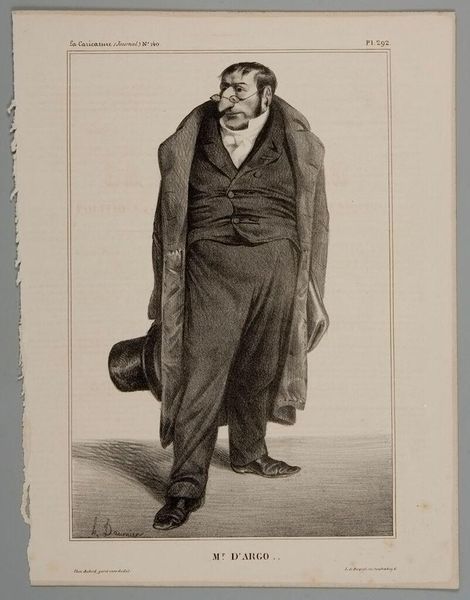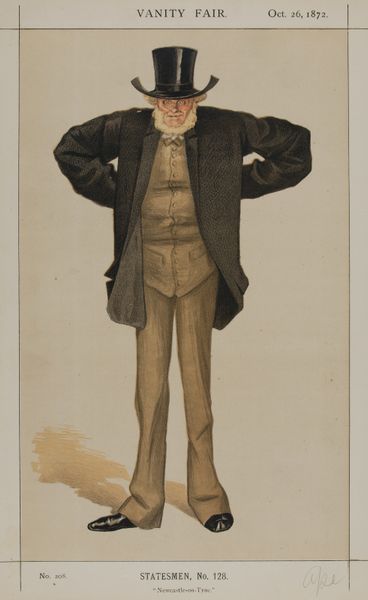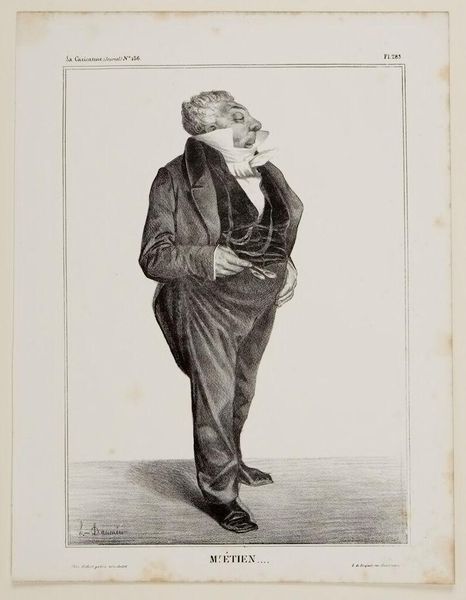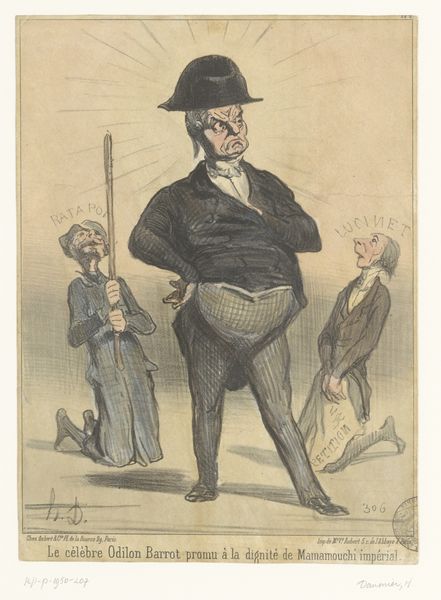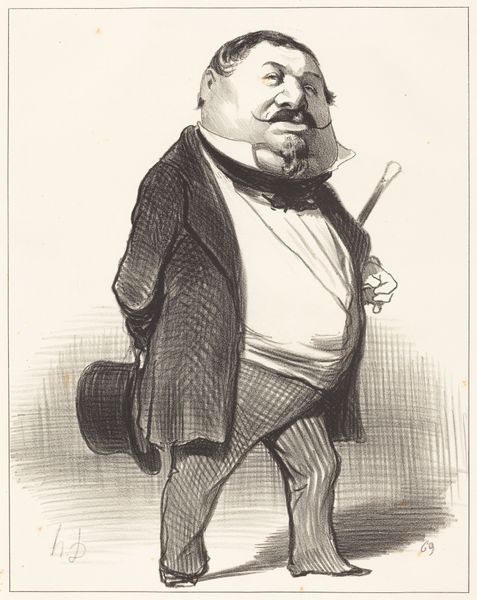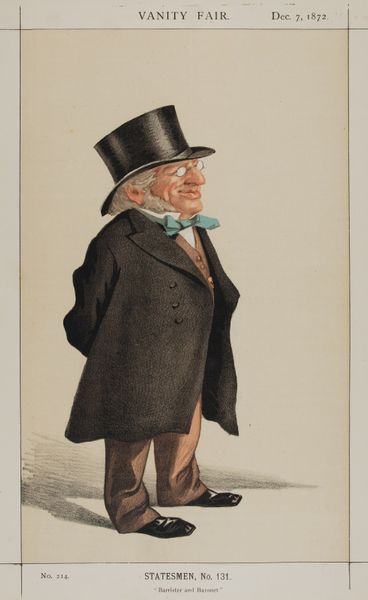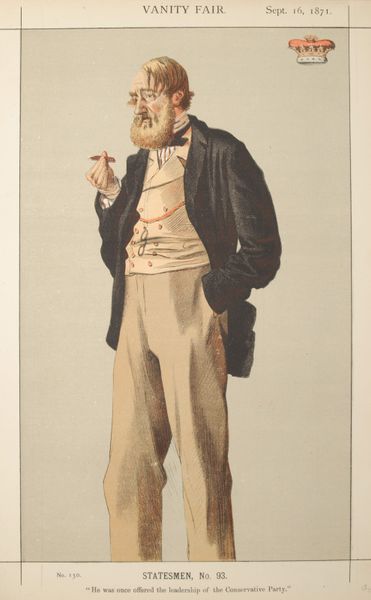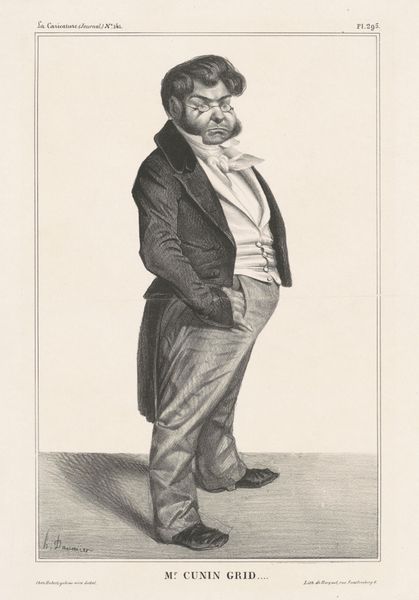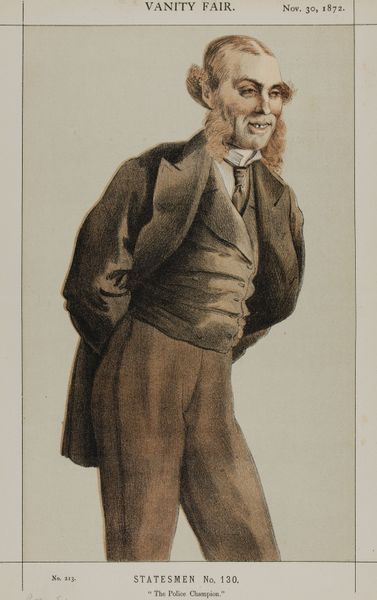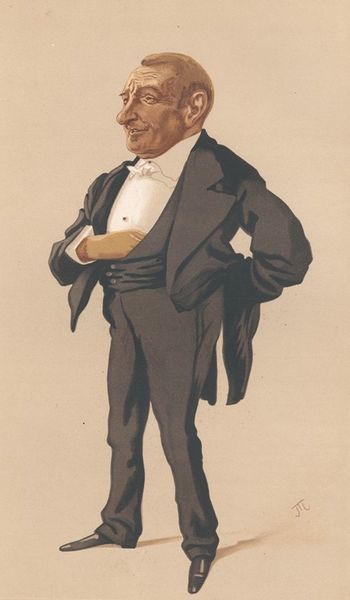
lithograph, print
#
portrait
#
lithograph
# print
#
caricature
#
caricature
#
figuration
#
orientalism
#
costume
#
line
#
genre-painting
#
history-painting
#
academic-art
Copyright: Public domain
Curator: This lithograph, "Statesmen No. 120 - Caricature of James Delahunty M.P.," by James Tissot, was printed in 1872 for Vanity Fair magazine. It offers a glimpse into the intersection of politics, identity, and popular culture during that period. Editor: My initial reaction is one of amusement. The artist really exaggerates the man's features! His broad face, tiny mouth, and that impressively tall hat give him such a particular visual weight. Curator: Exactly! The exaggerated features are the core of caricature, a visual rhetoric Tissot employs to comment on power and status. Delahunty, an Irish Member of Parliament, is portrayed here during a time of intense political debate regarding land reform and Irish Home Rule. Tissot is not merely creating an image, he's engaging in social critique. Editor: I’m more interested in how Tissot’s line work defines form here. Look at how the tightly clustered lines of shading build up the fabric of the suit, creating a sense of density. And then consider how this texture contrasts to the blank space surrounding Delahunty—there’s a clever handling of contrast that draws my eye right to him. Curator: The costume, meticulously rendered, reinforces Delahunty's social standing. We are dealing here with visual markers that not only convey information about a man, but about a moment in history: it gives insight into 19th century power structures and even stereotypes about Irish politicians circulating at the time. Editor: Semiotically speaking, you're seeing the costume as a symbol. For me, that costume presents formal values; the dark tones against the pale background, the cylindrical shapes, they each do vital work in generating a coherent form in our visual space. The whole composition, viewed formally, is wonderfully balanced, though the subject is caricatured. Curator: Ultimately, it highlights how identity, in this case a powerful man’s identity, is actively performed and perceived. Caricatures play with those performances, amplifying aspects that confirm pre-existing narratives. Editor: True. Though I confess, the most lasting impact, for me, is the pure, aesthetic balance, not merely the historicism of this particular form, but, I suspect, forms in general. Curator: A thought-provoking close, that encourages to examine the layers beneath the surface of Tissot’s seemingly straightforward depiction. Editor: Indeed. It reveals so much how form carries ideas about history.
Comments
No comments
Be the first to comment and join the conversation on the ultimate creative platform.
